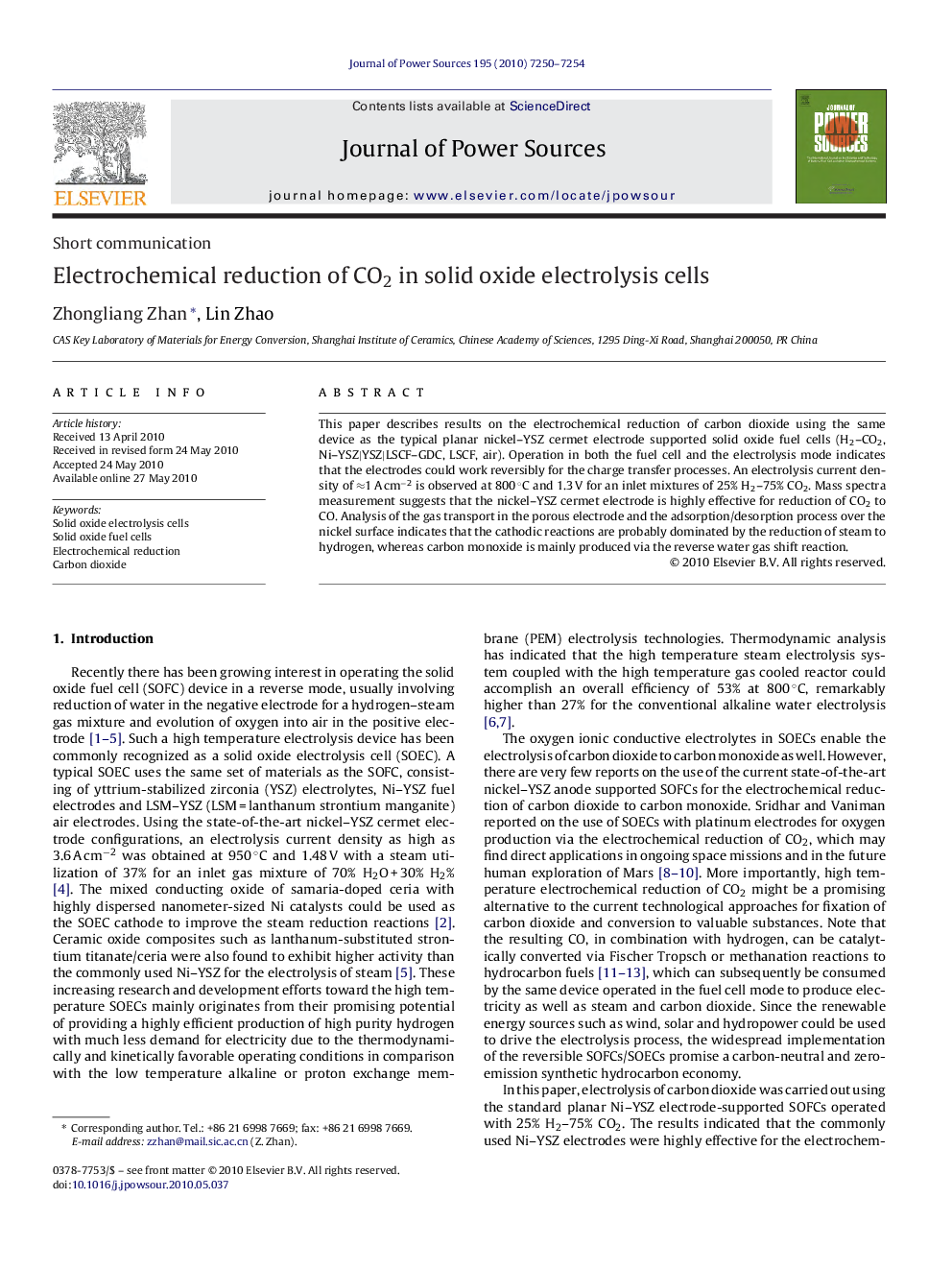| Article ID | Journal | Published Year | Pages | File Type |
|---|---|---|---|---|
| 1284872 | Journal of Power Sources | 2010 | 5 Pages |
This paper describes results on the electrochemical reduction of carbon dioxide using the same device as the typical planar nickel–YSZ cermet electrode supported solid oxide fuel cells (H2–CO2, Ni–YSZ|YSZ|LSCF–GDC, LSCF, air). Operation in both the fuel cell and the electrolysis mode indicates that the electrodes could work reversibly for the charge transfer processes. An electrolysis current density of ≈1 A cm−2 is observed at 800 °C and 1.3 V for an inlet mixtures of 25% H2–75% CO2. Mass spectra measurement suggests that the nickel–YSZ cermet electrode is highly effective for reduction of CO2 to CO. Analysis of the gas transport in the porous electrode and the adsorption/desorption process over the nickel surface indicates that the cathodic reactions are probably dominated by the reduction of steam to hydrogen, whereas carbon monoxide is mainly produced via the reverse water gas shift reaction.
